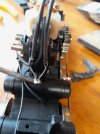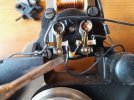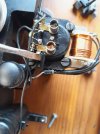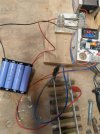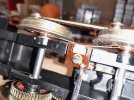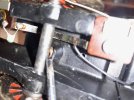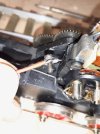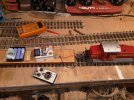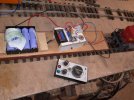justme igor
Registered
I am not sure if this is the right section?
I bought a diesel loc on Cata wiki, for experimental use.
I would be surprised if this one is a good runner, judging by the condition of the wheels. (Pretty dented)
But i bought it as a experimental loco, already figured out that there is a difference in hight between the European, Usa and the Ussr couplers


Anyway: Were to connect the new wires that are going to lead to the new dc battery?
I dont think that there are any ac motors. i could be very wrong in this?
How much voltage can apply??? max 24Vdc?
Its a Marklin btw
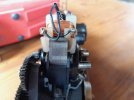
I think i must solder onto those two? This would be my first guess.
You see those diodes in the next picture? they are from a single point, i think that could be one lead and the frame is the other lead?
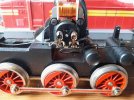 .Or on those two? i think not? cous they lead to the LED's but i could be very wrong?
.Or on those two? i think not? cous they lead to the LED's but i could be very wrong?
I really hope someone can shed a light on this were i need to solder to get him on battery power, and how much voltage max.
With best regards Igor.
I bought a diesel loc on Cata wiki, for experimental use.
I would be surprised if this one is a good runner, judging by the condition of the wheels. (Pretty dented)
But i bought it as a experimental loco, already figured out that there is a difference in hight between the European, Usa and the Ussr couplers
Anyway: Were to connect the new wires that are going to lead to the new dc battery?
I dont think that there are any ac motors. i could be very wrong in this?
How much voltage can apply??? max 24Vdc?
Its a Marklin btw

I think i must solder onto those two? This would be my first guess.
You see those diodes in the next picture? they are from a single point, i think that could be one lead and the frame is the other lead?
 .Or on those two? i think not? cous they lead to the LED's but i could be very wrong?
.Or on those two? i think not? cous they lead to the LED's but i could be very wrong?I really hope someone can shed a light on this were i need to solder to get him on battery power, and how much voltage max.
With best regards Igor.

